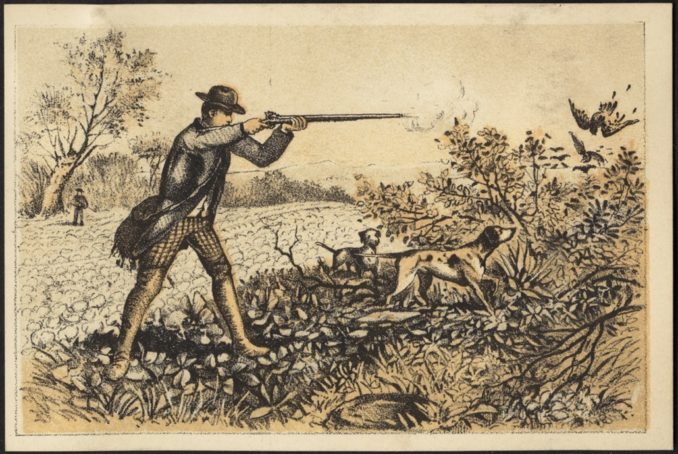
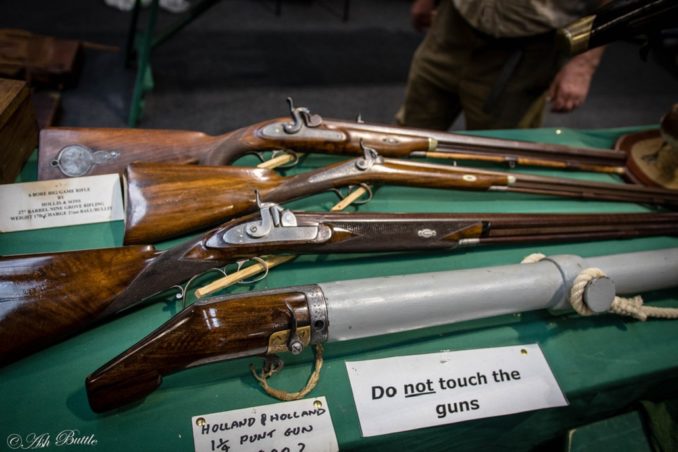
My esteemed colleague Tom Pudding will doubtless know more about the subject of antique firearms than I do, and has indeed written several articles that more or less overlap this period in history so I won’t go into too much detail lest I lead you all up the garden path. The first fowling pieces would have been musket type long guns, most likely early flintlocks or possibly late era matchlocks, made by local smiths or gun makers. Smooth bored, with long barrels typically 40 or more inches long and around ¾ inch in diameter, they would have been muzzle loaded with shot rather than ball ammunition in the field either by the gentlemen himself or more likely a manservant. The shot used would be akin to what the colonials call buckshot, so lead pellets of a size greater than 6mm, with the total load weighing around 2oz, giving a total pellet count of around 40. Make no mistake, loaded with shot these guns were devastating at short to medium ranges, and fairly accurate too, and would have killed large waterfowl easily up to 50 yards distant. These early pieces were heavy and cumbersome, you certainly wouldn’t swing them like modern guns, and reloading in less than ideal conditions would have been slow going. But they must have been fairly handy, because the sport became very big in a short period of time, popularised by the likes of Col. Peter Hawker, and sparked a literal arms race of technical innovation in firearms that was mostly driven here in these very islands.
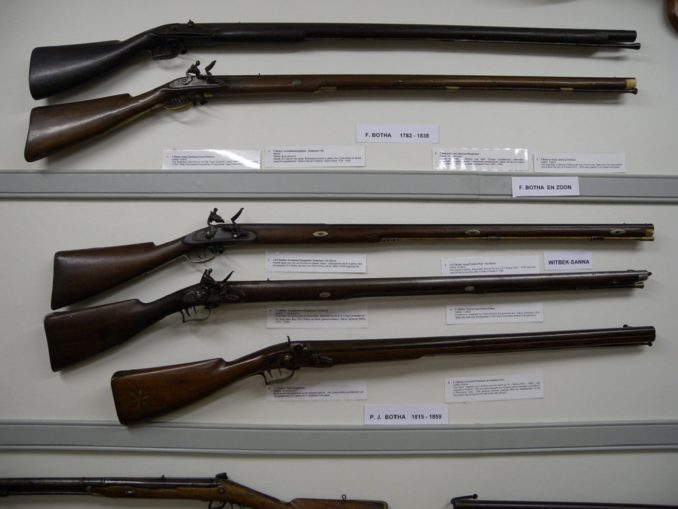
The period of time that elapsed from the discovery of fulminate of mercury, to the invention of the percussion cap, to early breech loaders was very short indeed, probably only 20 years or so at height of the regency period. If you are the sort of person who likes names and dates, there are several fairly comprehensive Wikipedia articles covering the major developments of the time, and those innovators responsible for them. Names such as Manton and Pauly are worth researching as they made significant leaps forward in the field. It is at this point however, that the divergence of military and sporting firearms becomes noticeable. All of the major developments in technology had come about because armies needed to shoot further and more accurately as battlefield tactics evolved, and very few purely sporting guns existed up to this point. As muskets gave way to the supremacy of the rifle, smooth bores became shotguns and although there was still a place for them in times of war (particularly on horseback), their usefulness in other areas took precedence and the rest is history. The age of the sporting firearms manufacturers was about to begin in earnest, where many household names would spring up and legends were made. This is of course a very simplistic overview, but for the purposes of this article, it will suffice.
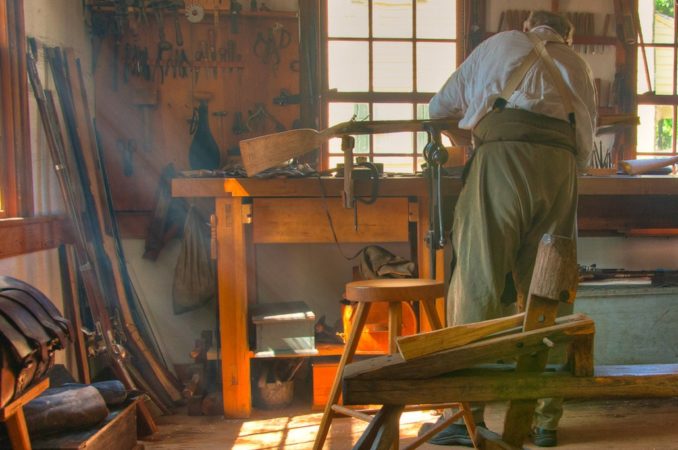
The genesis of the modern sporting shotgun had finally arrived, and by the beginning of the reign of Queen Victoria, the finest London gun makers were turning out commissioned pieces that bare a close resemblance to the guns we can find on the racks of your local gunshop today. But wildfowlers like to be different, and while the sport of driven game shooting took off in a big way, leading to the development of lighter, more controllable and elegant shotguns typical of the likes of Holland and Holland and Purdey, often in smaller calibres like the now unpopular 16 bore, fowling guns stayed true to their roots. Many clung to the tried and tested muzzle loaders, and large calibres were still the order of the day, with double barrelled shoulder guns of 8 and 10 bore being the most common. Larger ‘Market’ or ‘Punt’ guns which were either fired from river banks in the prone position or mounted on a boat, had very long barrels, huge bores and could carry shot loads of 2lbs or more. Fired into flocks of roosting birds on tidal mudflats, they would kill hundreds, which would be collected and quickly packed onto trains, headed to markets in the big cities. Punts enjoyed their halcyon days in the late Victorian era when the demand for fresh fowl was at its height, but quickly fell out of favour after the First World War, when attitudes and appetites changed. Its popularity continued to wane throughout the post war years and successive tinkering with legislation made getting into it more and more difficult. There are still a few punt gunners plying their trade on the more remote estuaries, but it is a decidedly niche sport nowadays, and I’ve never actually met anyone who still does it, although I know a few people who used to. Anyway, enough meandering. For a time, I suppose you could consider it the golden age, fowling was big business and it made a few individuals in areas like the Romney marshes and the Cambridgeshire fens very wealthy.
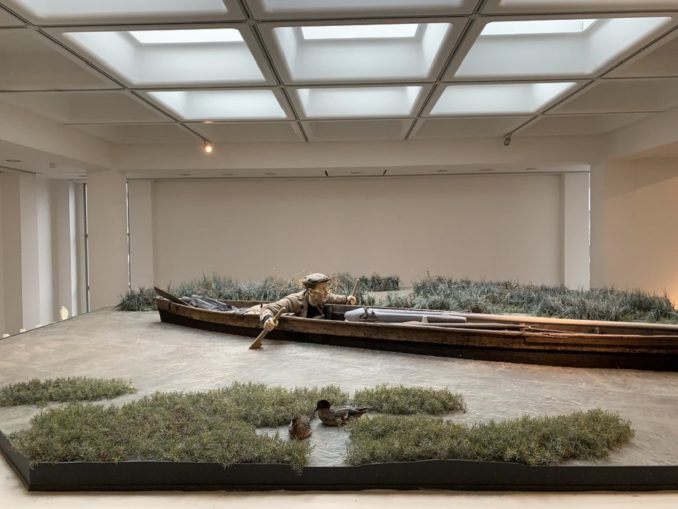
While black powder was the only propellant in use for shotguns, the weapons themselves needed to remain overly large to compensate for the relatively slow burn and low pressure produced, meaning every shot had to count, but its days were numbered. The advent of nitro or smokeless powders was a real game changer, and one that the more forward thinking fowlers quickly adopted. The dawn of the 12 bore as the supreme calibre was upon us, and for 90% of shooters it has remained that way ever since. Much higher gas pressures with faster burning powders meant shots could be taken at greater distances, but with smaller loads from lighter guns and the availability of cheap paper cased cartridges opened up the sport to ordinary people in a way it had never been before. Of course, the guns had to be modernised too, with breech pressures now exceeding 1000 bar rendering a lot of early hammer guns with Damascus twist barrels and certainly most muzzle loaders obsolete. By this time, the Birmingham trade was preeminent in the world in small arms manufacture and was churning out thousands of guns every week, with budgets to suit almost everyone. By the 1890s, the modern shotgun had arrived in the form of the hammerless boxlock. One or two makers carved out a good name for themselves in this period, catering for the wildfowling market. Preeminent amongst them was the already established name of J & W Tolley who specialised in large bore shotguns, many of which you can still find today. W & C Scott, a much larger firm was also a favourite of fowlers, offering as they did robust and reliable guns with asking prices to suit almost every budget. They also made guns for other names at this time, often supplying blank actions and stocks, to be finished to the customers taste for the big London names, as much of the smiths of the Birmingham gun quarter did.
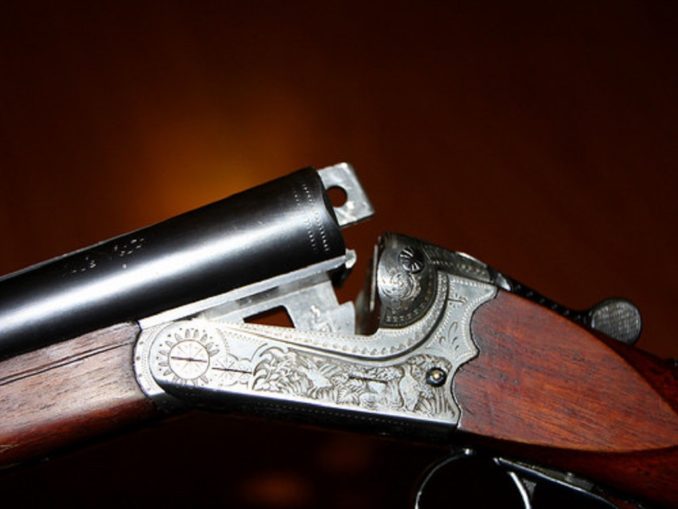
Innovation didn’t end there however, as around the same time Boss & Co developed the first practical hammerless over and under shotgun, a design that was so complicated and ahead of its time that it took nearly 70 years to gain acceptance (at least on these islands) and is still in production in some of the most exclusive guns available today, The rise to prominence of our American cousins both as an industrial and Military power had seen a significant arms industry with very different ideas develop as the century turned. The Winchester Repeating Arms Company along with a few others lead the development of the shotgun off into strange new places, firstly with the invention of the first practical pump or slide action in 1893, allowing for multiple shots without reloading, and then the Browning patent semi-automatic, or self-loader in 1900, a gun that revolutionised hunting in the USA. John Moses Browning (a genius in my opinion) hadn’t finished there however, going on to simplify the over and under by making it more reliable and most importantly, affordable. The O/U is now the most commonly encountered shotgun type in the world, and nearly all of them can trace their DNA back to the original Browning patent. Always suspicious of those uppity colonials, the new-fangled designs and ideas failed to prove popular over here in any branch of the sport, with the (now hammerless) double trigger side by side reigning supreme until the 1970s, when competition clay shooting took off in a big way and the handling characteristics of the stacked barrel proved vastly superior in terms of controllability in the face of predictable, consistent targets. Guns had never been cheaper, with continental arms of good quality made specifically for the UK market flooding in, and brands such as Beretta and AYA becoming commonplace. In fact, Spanish side by sides were so good, they all but killed off the gun trade in the UK, leaving only the high end makers who they couldn’t match for reputation, but were the equal of in terms of manufacture.
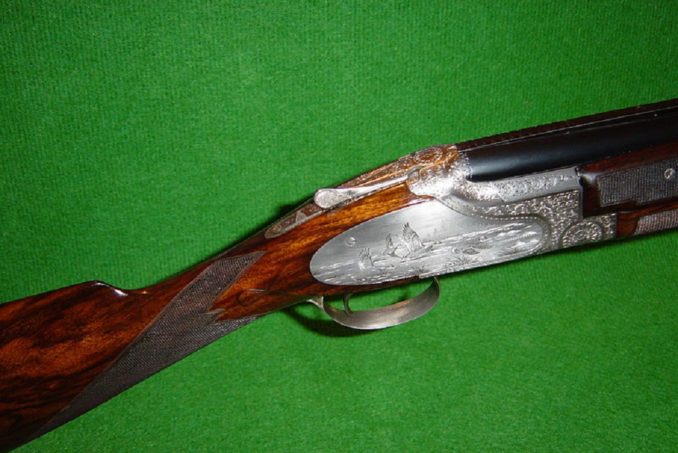
So, we are nearly at the present day in this history. When my dad started fowling in the early 60s, he was wielding a 1920s Greener single barrelled 10 bore, using cartridges loaded at home. This wasn’t a typical set up, but it was all he could afford. When he became a gamekeeper a few years later, he acquired an early Browning superposed (or B25) over and under in 16 bore, a more common calibre then than it is now, but still unusual. He still has this gun although it has now been legally deactivated and has pride of place on the wall over the fireplace. He used this to great effect on saltmarshes all around the country, relying on a combination of skill and luck rather than overwhelming force for over 30 years, until the introduction of the lead shot ban rendered it unsuitable, and he retired it. In 1999 when the UK government introduced legislation to prohibit the use of lead over wetlands, a part of the sport died. Many antique guns were scrapped as they became unusable, or were ruined trying to reproof them for steel loads which require much higher breech pressures. A few diehards still took out their favourite old English made gun for a bit of nostalgic flighting, or you might have seen the odd old boy with his Russian Baikal that are as tough as old boots and will probably last forever. But sadly for most, the age of the side by side as an effective tool on the marsh was virtually over, nearly 150 years after it had begun due to a combination of changing fashions and ill thought out and unscientific political theatre.
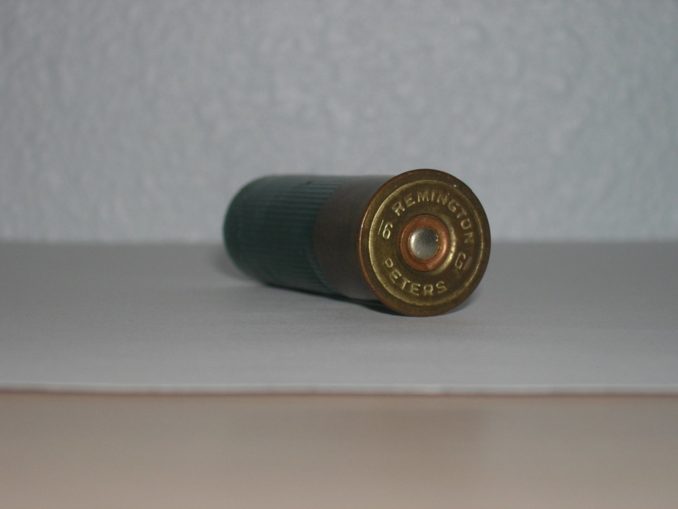
Nowadays, the majority of coastal wildfowlers will be found using large chambered semi automatics, as they are the guns most capable of coping with the harsh environment and the rigours of non toxic cartridges. As a tool, they are perfectly suited to this role and as such they dominate the sport worldwide. Because they are relatively simple to maintain and cheap to buy, its hard to see them being replaced by fads and fashions so will probably still be the mainstay when the sport goes the way of the dodo, whenever that may be. We wildfowlers are nothing if not a resilient bunch, so while the sport still continues on in the modern age, i’ll be there to make the most of it. This chapter in history is the only one I have known but for me it is one tinged with sadness all the same. A sadness of lost connections with those that came before me and fears of what is to come.

© Columba Palumbus 2022



